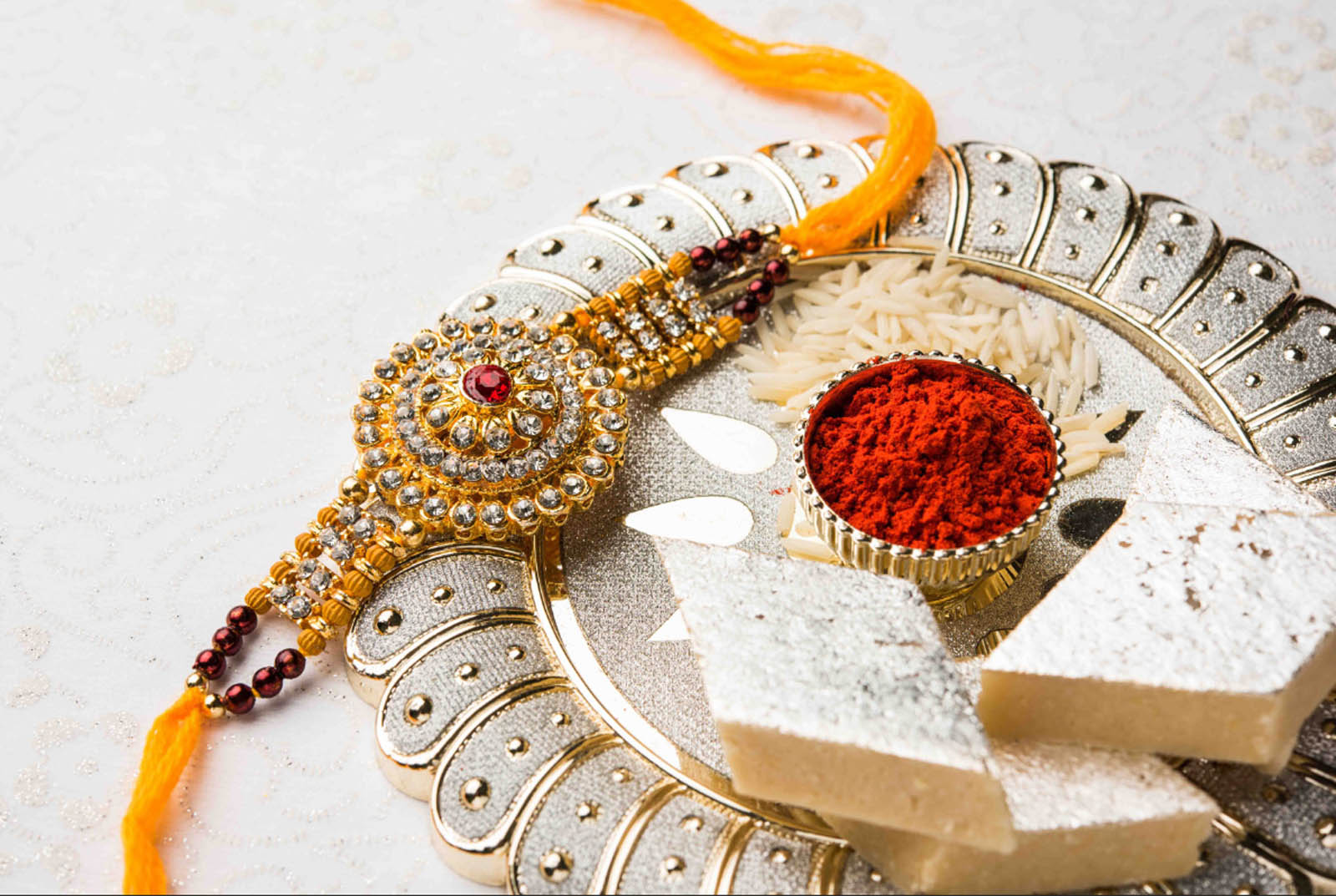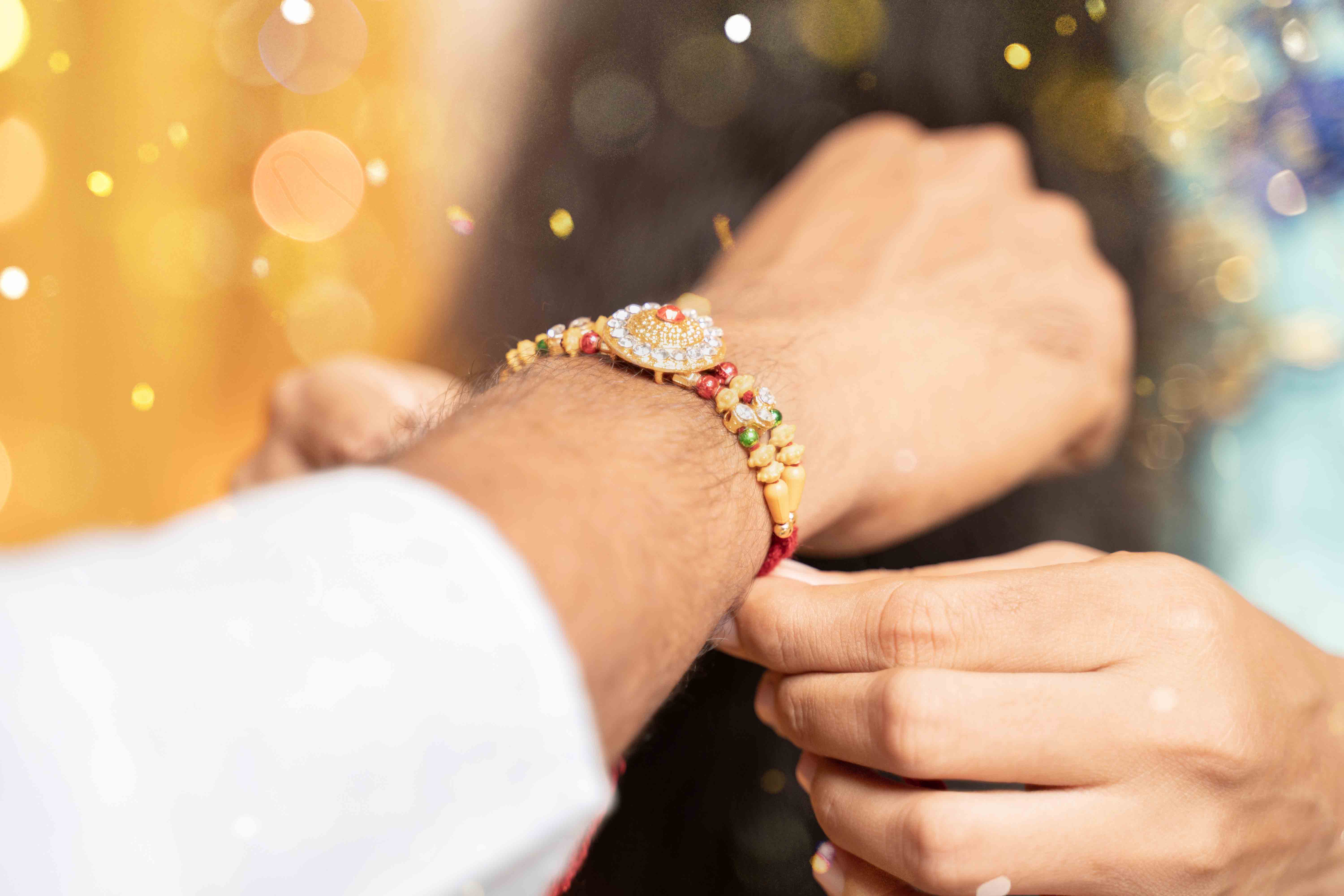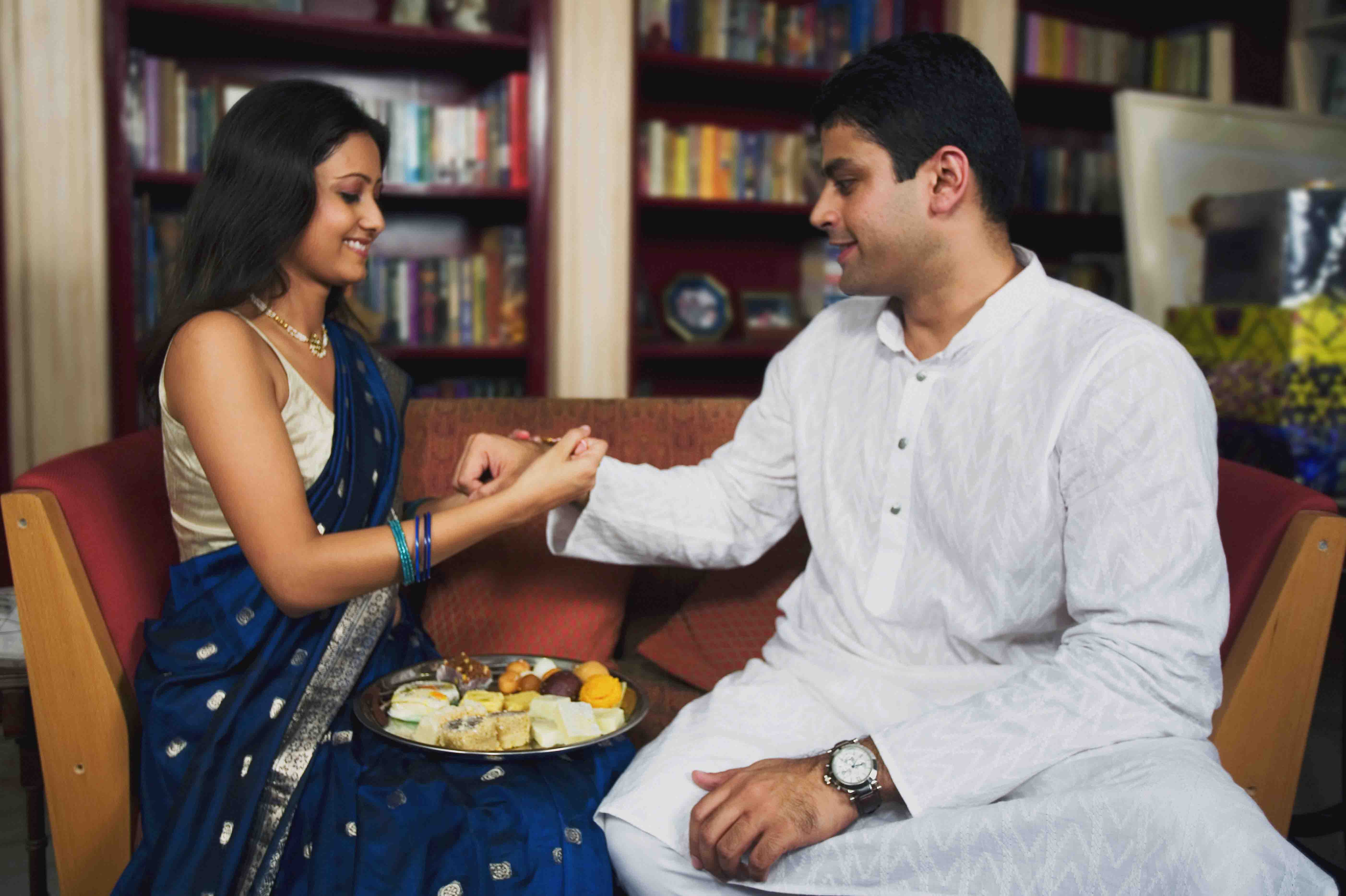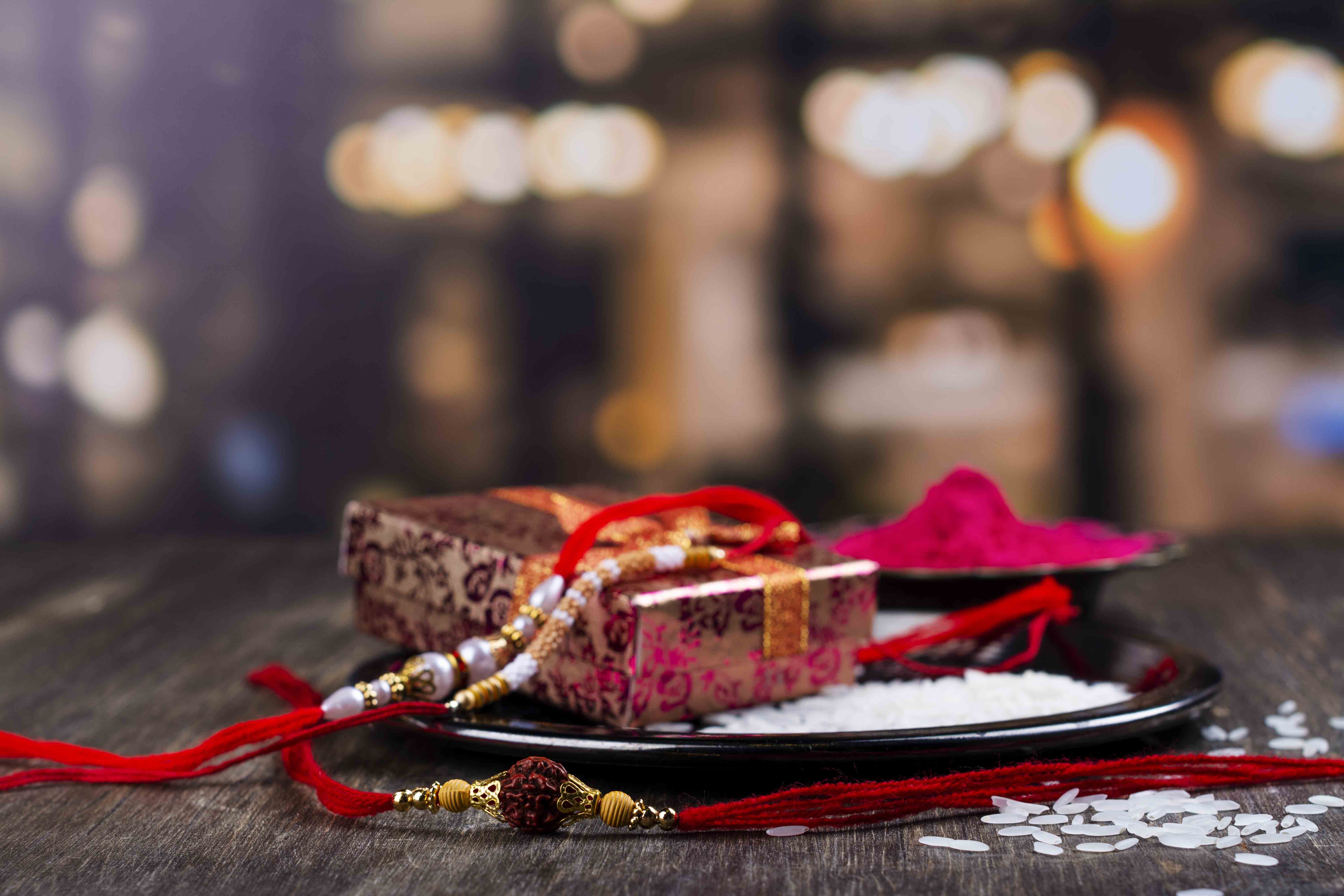
Tying Rakhis: How Indian Siblings Express Love & Protection
Filed Under: Asian American, Multicultural

Shaili Bhatt
Alum, Online Qualitative Research
Rakshabandhan (Rak·sha Bun·dun) is a traditional Hindu ceremony that is popular among Indian families in South Asia as well as in the United States. The central focus of this annual rite or ceremony is to celebrate the bonds of sibling love and protection, specifically between pairs of brothers and sisters of all ages, starting as young as babies.

During a Rakshabandhan ceremony, a sister is responsible for tying a talisman or amulet bracelet, called a “rakhi,” onto her brother’s right wrist; this rakhi is believed to symbolically provide protection from challenges in the year ahead. After the strings of the rakhi have been tied, the siblings usually exchange something sweet to eat, varying from bite-size Indian sweets to name brand chocolates like M&Ms, Ferrero Rocher, or Godiva truffles. The family that’s hosting may pull them out, or a sister may bring them along to be used in the ceremony – it varies.
Rakhis can be either handmade or store-bought bracelets that are crafted using brightly colored, sturdy thread like embroidery floss. For some families in America, it can be made of the same kind of cotton or silk thread that you would use to braid into colorful friendship bracelets. (Anyone young-at-heart may remember those, or still wear them!) Some sisters take time to craft their rakhis at home. For many years, I personally made bracelets for my brother and cousin-brothers with my own set of embroidery floss; however, many Indian Americans also like to buy their rakhis at local Indian grocery stores, and more recently, I’ve even bought them on Amazon.
Most rakhis feature a central eye-catching element; a brightly colored, fluffy pom-pom ball is common. They may also include a decorative combination of beads, stones, or sequins, ending with a pair of strings, so it can be tied onto a wrist. There are also designer rakhis that are crafted using an ornamental pendant or sparkling stones.
This ritual of tying the rakhi bracelet is preceded by the sister pressing wet powdered red turmeric (tilak), followed by a few grains of unbroken & uncooked rice into a fresh dot on her brother’s forehead. (Rice is widely considered to be one of the purest grains.) This sequence of actions is religiously and spiritually believed to impart positive energy to the ritual.

All of these elements – the wet turmeric powder, rice, sweets, rakhis – are usually thoughtfully and decoratively arranged on a sturdy metal platter (thali). You might even see some marigold flowers added for decoration, which represent the Sun, symbolizing brightness, and yes, positive energy. This thali presentation often includes a small sacred flame in an equally small brass container (devo) that is lit in honor of the Hindu god, Agni.
Whatever happens to the brother(s) in the year that follows, the sister’s love is said to protect him. Many siblings will hug each other after exchanging their sweets; it can be amusing to observe the rare and awkward physical affection among some tweens and teens. In return for receiving this protection, the brother usually offers a small gift to his sister as a token of his appreciation.
As nuclear families may have fewer sisters, or none, the practice of tying a rakhi can also extend to one’s cousins. It is also acceptable for a person to love someone as a brother through the tying of a rakhi (as a “rakhi sister”), transcending the boundaries of the family. Long-distance siblings or cousin-sisters that are unable to tie a rakhi in-person may also write a card or letter to accompany a rakhi, which can then (optionally) be tied by a spouse, priest, or another female relative in the family. In case you’re curious, some brothers may choose to remove their rakhis (and anything marking their forehead) immediately after the ceremony, while other brothers opt to stay fully adorned, and they will wear the rakhis on their wrist until they naturally fall off. More sentimental brothers might even save their old rakhis.
The entire Rakshabandan ceremony is usually performed from the privacy of the home and in the presence of other family members, including extended family, who are usually on-hand to take pictures for posterity.

This time-honored Indian tradition has historically been celebrated on the full-moon day of the Hindu month of Sravana, which is August 22nd in 2021. In America, this family gathering usually takes place on a day of choice in August, usually a weekend at someone’s home or backyard, when it is convenient for one’s immediate siblings and/or extended family to meet.
Thank you for taking a moment of your day to learn about Rakshabandan! The next time you see a row of string bracelets tied on a South Asian person’s wrist in the months of August or September, I hope you will feel more informed about the ceremony that they may have participated in.
explore featured
Case studies
